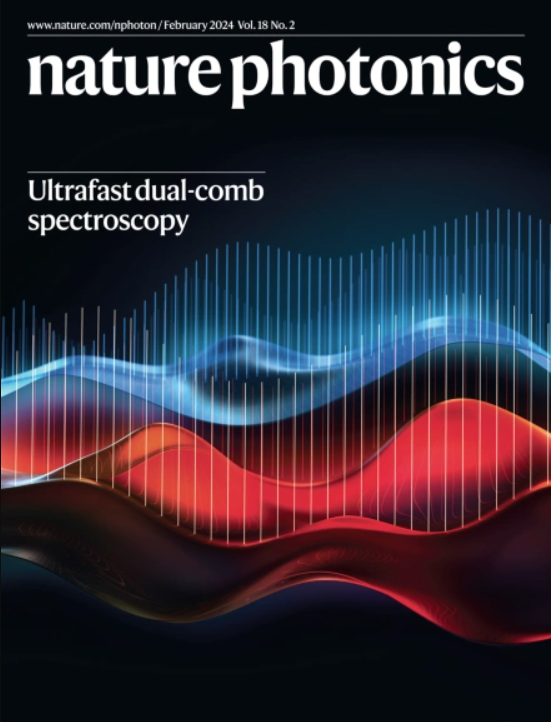用涡旋光对电子量子霍尔态进行光抽运
IF 32.9
1区 物理与天体物理
Q1 OPTICS
引用次数: 0
摘要
量子技术的一个基本要求是能够连贯地控制电子和光子之间的相互作用。然而,在许多涉及光与物质相互作用的情况下,电子和光子之间的线性或角动量交换是不可行的,这种情况被称为偶极近似极限。手性电子和涡旋光之间的相互作用就是超越这一极限的一个例子,在这种情况下,光的轨道角动量可以转移到电子上。在这里,我们提出了一种从光学涡旋光束到电子量子霍尔态的轨道角动量转移机制。具体来说,我们发现在量子霍尔机制下的环形石墨烯样品中,径向光电流的强大贡献取决于光的涡度。这种现象可以解释为一种光泵浦方案,即光子的角动量传递给电子,产生径向电流,电流方向由光的涡度决定。我们的发现为量子相干性的光学探测和操纵提供了基本见解,对推动量子相干光电子学的发展具有广泛影响。本文章由计算机程序翻译,如有差异,请以英文原文为准。


Optical pumping of electronic quantum Hall states with vortex light
A fundamental requirement for quantum technologies is the ability to coherently control the interaction between electrons and photons. However, in many scenarios involving the interaction between light and matter, the exchange of linear or angular momentum between electrons and photons is not feasible, a condition known as the dipole approximation limit. An example of a case beyond this limit that has remained experimentally elusive is when the interplay between chiral electrons and vortex light is considered, where the orbital angular momentum of light can be transferred to electrons. Here we present a mechanism for such an orbital angular momentum transfer from optical vortex beams to electronic quantum Hall states. Specifically, we identify a robust contribution to the radial photocurrent, in an annular graphene sample within the quantum Hall regime, that depends on the vorticity of light. This phenomenon can be interpreted as an optical pumping scheme, where the angular momentum of photons is transferred to electrons, generating a radial current, and the current direction is determined by the vorticity of the light. Our findings offer fundamental insights into the optical probing and manipulation of quantum coherence, with wide-ranging implications for advancing quantum coherent optoelectronics. Orbital angular momentum transfer from optical vortex beams to electronic quantum Hall states is reported in a graphene sheet, showing a robust contribution to the radial photocurrent that depends on the vorticity of light.
求助全文
通过发布文献求助,成功后即可免费获取论文全文。
去求助
来源期刊

Nature Photonics
物理-光学
CiteScore
54.20
自引率
1.70%
发文量
158
审稿时长
12 months
期刊介绍:
Nature Photonics is a monthly journal dedicated to the scientific study and application of light, known as Photonics. It publishes top-quality, peer-reviewed research across all areas of light generation, manipulation, and detection.
The journal encompasses research into the fundamental properties of light and its interactions with matter, as well as the latest developments in optoelectronic devices and emerging photonics applications. Topics covered include lasers, LEDs, imaging, detectors, optoelectronic devices, quantum optics, biophotonics, optical data storage, spectroscopy, fiber optics, solar energy, displays, terahertz technology, nonlinear optics, plasmonics, nanophotonics, and X-rays.
In addition to research papers and review articles summarizing scientific findings in optoelectronics, Nature Photonics also features News and Views pieces and research highlights. It uniquely includes articles on the business aspects of the industry, such as technology commercialization and market analysis, offering a comprehensive perspective on the field.
 求助内容:
求助内容: 应助结果提醒方式:
应助结果提醒方式:


